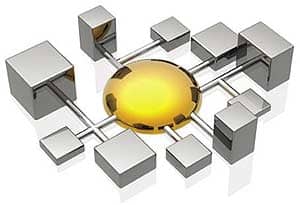
In the middle of a hectic day, the pager chimes its melodic tone demanding attention. The patient monitor in room D4550 has an impending failure. While repairing the device an e-mail comes through the wire; a ventilator has reported in that it has hit the cycle threshold and needs some nondurable parts replaced.
Do you ever wonder how nice it would be if all those devices you support could “phone home?” It is becoming common for medical devices to have some sort of communications pathway to transmit information from the device. Most commonly, these are used to integrate device data with other systems or to consume data from other devices. Why not leverage these capabilities to make the maintenance and support of these devices safer and more efficient?
The majority of devices in use within health care today that would have these communications capabilities typically fall into the “why do we still do a scheduled maintenance on this?” category. There have been several studies done recently that demonstrate the need to reassess the de facto industry practice of putting every device on some kind of scheduled maintenance. The need for preventive (or planned, or …) maintenance has changed over the years, and the time for predictive maintenance has come. Much of the reasoning behind scheduled maintenance is to prevent failures. So, what if devices reported information back to a repository that could help to predict when a device needs maintenance?
Predicting Failure
One example of a device that could benefit is the infusion pump. These devices are often put on a periodic maintenance schedule to ensure they stay calibrated to provide an accurate flow of medications. However, with newer sensors and motors combined with periodic data reporting, the need to service a pump could be advised by the device itself instead of trying to predict the need.

Medical devices now have some sort of communications pathway to transmit information from the device to integrate device data with other systems.
The resource savings could be substantial as technician time could be reallocated to other needs such as network troubleshooting, design, and analysis instead of spending monotonous time doing scheduled maintenance.
Another area that could be leveraged via this communications pathway is a method to monitor the status of devices across an enterprise. For example, that patient monitor in room D4550 allowed the support person to repair or replace the device prior to the nurse even knowing there was a problem. A common example of a device that already leverages this is the pump. Many of these devices have the ability to report periodic data such as an occlusion alarm or door open alarm. They also report back periodic data such as flow rates and volumes delivered that could be used to make sure they are still within calibration limits.
As with many other portable devices, pumps have become a burdensome support contender because of their batteries. Why not leverage existing technologies that can monitor the battery status? Information such as time of last charge, current charge capacity, and estimated life could be reported back to a repository that has the capability to crunch this data. The results could then be utilized to make battery maintenance less expensive and less burdensome.
A Remote Presence
If that communications output was an IP communications pathway, it could also be used to help a technician fix a problem via remote maintenance. For example, if an MRI shuts down and the vendor’s field service engineer is 2 hours away, someone at the vendor’s help desk could dial in to the MRI. With a remote search of event logs the proper parts could be shipped to the site while the engineer is traveling. Instead of waiting for the engineer to arrive on-site, the parts arrive at the same time and minimize the downtime. In the case of some devices, such as surgical robots, a remote engineer could also watch a procedure instead of just getting relayed information about what is not working. This could greatly improve the ability to resolve the problem.
|
Find past Networking articles in the archives. |
However, there are risks once all these devices are talking across the enterprise network. A defined process to manage these risks must be put into place for continued safe and effective operation. The same network that is causing these potential risks could be used to manage them. For example, to maintain the safety and effectiveness of networked devices it may be important to deploy security patches or keep virus protection definitions up to date. However, patches or updates should not be installed on devices without a manufacturer’s authorization. A process should be developed that allows a device to check into a repository that authorizes, downloads, and installs the necessary patches. This same process could be used to manage not only periodic updates such as operating system patches, but also other processes such as drug library updates or when a remediation requires software updates.
Through these examples it has been shown how these communications pathways should be leveraged to make their management more efficient. Creating an easily deployed method is the next step to realizing these benefits.
Steve Merritt is an infrastructure engineer at Baystate Health, Springfield, Mass, and co-chair, IHE patient care devices planning committee. For more information, contact .
Leveraging Capabilities
To make the most use of communications pathways in order to make their management more efficient involves creating an easily deployed method. Some vendors have already implemented options into their devices or networks to achieve these concepts. The next step is to create a single set of specifications that is vendor neutral.
Recently, a whitepaper was published on these topics by the Integrating the Healthcare Enterprise patient care device (PCD) domain. This paper, available at ihe.net/Technical_Framework/index.cfm#PCD, discusses how existing PCD transactions could be leveraged to solve some of these problems. For example, the alarm communication management profile within PCD could be used to send out that page that the patient monitor sent out that was discussed in this article. Through the whitepaper, the PCD domain has placed medical equipment management on its roadmap and will work over the coming months to find solutions to these problems that the industry faces today.
—SM




